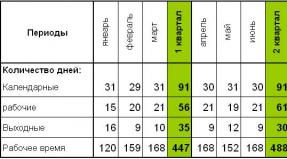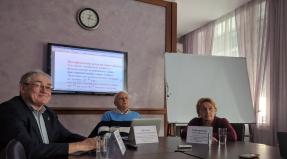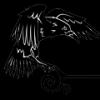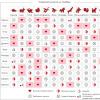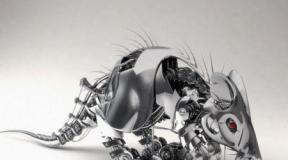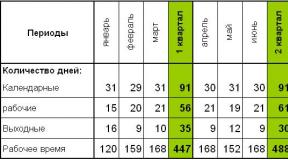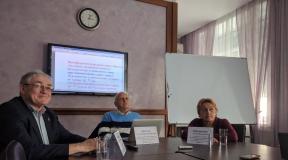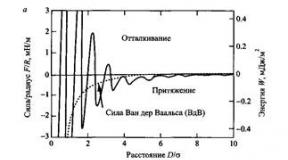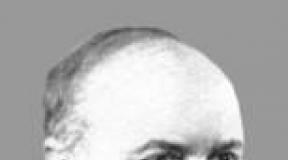Static electricity from the air. Powering radio devices with electromagnetic field energy Electricity from fm radio stations
The article describes a homemade device for wireless energy (electricity) transmission, which can operate on the energy of radio waves from mobile communications.
Mobile phones are so common that today almost everyone has them, and not in a single copy. Despite their apparent harmlessness, they emit invisible radio waves during calls and conversations.
Today, authoritative researchers have proven the adverse effects of high-frequency radio waves on the organs of living organisms, so a mobile phone is a direct threat to our brain, because most often people do not use headphones as a wired headset for conversations.
Some people believe that all this talk about the dangers of mobile communications is far-fetched, and the amount of radiation is so small that it is not able to cause any significant harm to the human body. But they are wrong only because in reality there is simply a sea of harmful radio wave energy “thrown out” into your body. It is even enough to power a small light bulb, for example, an LED. This energy is more than enough for cancer cells to begin to actively multiply.
To open the eyes of such skeptics, I developed and assembled a simple device with an LED that lights up even without batteries, consuming only the energy of mobile radio waves for its needs. The result is an incredibly miniature working device for measuring the intensity of harmful radiation from a mobile phone, which even a schoolchild can assemble. If you are interested, then spend five minutes of your personal time assembling such an interesting device that you can surprise your friends with.
Mobile wireless electricity receiver
To realize my plans, I found the following:
1. thick copper wire, from which it will be possible to assemble a matching device that resonates at the frequency of mobile communications (1000-1800 MHz);
2. 1N21B diode or any other germanium diode that can be removed from an old radio or TV;
3. LED designed to register the energy of radio waves from a mobile phone. If these 3 things are found, then you can start assembling this device.
First, you should find a couple of phones, one of which will constantly call the second. Carry out all work in the immediate vicinity of the switched on phones, this way you will “catch” the moment the device is turned on.
Secondly, we bend the wire into a square, each side of which should be 7.5 cm.
Thirdly, we thoroughly tin the ends of the wire so that we can properly solder the diode and LED. For this, this one may well suit you.

Fourthly, we achieve the correct geometric shape of the wire and begin to look for the place of the highest mobile signal level, which, as a rule, is located at the back at the top of the phone.
If the circuit is assembled more or less correctly, the LED begins to glow as soon as you bring it to the phone.
Fifthly, to increase the brightness of the LED, it is necessary to accurately determine the length of the wire. Of course, you will not be able to accurately determine the wavelength of a radio signal without special expensive equipment, and this is not required. In a real assembly, you can use a trick and do the following: shorten the length of the wire piece by piece (2mm at a time), looking for the exact length of wire for resonance.
In some regions, a copper square antenna with a side length of 5.5 cm showed a good result. If you know exactly the frequency of mobile communications in your region, then calculate the wavelength using the formula: wavelength (m) = 300/frequency (MHz). Then divide the wavelength by 4. The result of this calculation is the length of one side of the copper square. For 1000 MHz we get 0.3 meters, i.e. 30 centimeters.
In this case, the length of one side of the copper receiver is: 30/4 = 7.5 cm. Thus, if the main frequency of mobile communications in your region is at a frequency of 1000 MHz, then the best receiver should have a square shape with a side of 7.5 cm. As an alternative to a square shape, You can use a round receiver.

After finding the optimal size and shape, you can safely solder the direct-connection diode and LED. The diode will act as a kind of detector, and the LED will blink in time with the detected radio signal. This is all very similar to the operation of a detector radio receiver, with the only difference being that it will not be loaded by a speaker or a high-impedance headphone, but by an LED.
To prove full functionality, I provide pictures of phones and working devices.
For many years, scientists have been searching for an ideal alternative source of electricity that would make it possible to extract current from renewable resources. Tesla thought about how to get static electricity from the air in the 19th century, and now scientists have come to the conclusion that yes, this is quite possible.
Types of production
Alternative electricity can be produced from the air in two ways:
- Wind generators;
- Due to the fields that permeate the atmosphere.
As is known, electric potential tends to accumulate over a certain time. Now the atmosphere is riddled with various waves produced by electrical installations, devices, and the natural field of the Earth. This allows us to say that electricity can be obtained from atmospheric air with your own hands, even without any special devices or circuits, but we will discuss the features of current production for this option below.
Photo – lightning batteryWind generators are long-known sources of alternative energy. They work by converting wind power into current. A wind generator is a device that can operate for a long time and accumulate wind energy. This option is widely used in various countries: the Netherlands, Russia, USA. But one wind turbine can provide a limited number of electrical appliances, so entire fields of wind turbines are installed to power cities or factories. There are both advantages and disadvantages to using this method. In particular, wind is a variable quantity, so the level of voltage and accumulation of electricity cannot be predicted. At the same time, it is a renewable source, the operation of which does not harm the environment at all.
 Photo – wind turbines
Photo – wind turbines Video: creating electricity from thin air
How to extract energy from thin air
The simplest circuit diagram does not include any additional storage devices and converters. Essentially, all that is required is a metal antenna and ground. An electric potential is established between these conductors. It accumulates over time, so it is a variable value and it is almost impossible to calculate its strength. Such a current-generating device operates on the principle of lightning - after a certain period of time, a current discharge occurs (when the potential has reached its maximum). Thus, it is possible to extract a sufficiently large amount of useful electricity from the ground and air, which will be sufficient to operate the electrical installation. Its design is described in detail in the work: “Secrets of the free energy of cold electricity.”
 Photo - diagram
Photo - diagram The scheme has its own dignity:
- Easy to implement. The experiment can be easily repeated at home;
- Availability. No tools are needed; the most ordinary plate of conductive metal will be suitable for the project.
Flaws:
- The implementation of the scheme is very dangerous. It is impossible to calculate even the approximate number of amperes, not to mention the strength of the current pulse;
- During operation, a kind of open ground loop is formed, to which lightning is attracted. This is one of the most important reasons why the project did not “go to the masses” - it is dangerous for life and production. A lightning strike sometimes reaches 2000 volts.
From this point of view, free electricity produced using wind generators is safer. But nevertheless, now you can even buy such a device (for example, the Chizhevsky ionizer-chandelier).
 Photo – Chizhevsky chandelier
Photo – Chizhevsky chandelier But there is another option for a working scheme - this is a TPU generator of electricity from the air from Steven Mark. This device allows you to obtain a certain amount of electricity to power various consumers, and it does this without any external recharge. The technology has been patented and many scientists have already repeated the experience of Stephen Mark, but due to some features of the scheme it has not yet been put into use.
The operating principle is simple: current resonance and magnetic vortices are created in the generator ring, which contribute to the appearance of current shocks in metal taps. Let's look at how to make a toroidal generator to extract electricity from the air:

At this point the construction can be considered complete. Now you need to connect the leads. First you need to install a 10 microfarad capacitor between the return and ground terminals. High-speed transistors and multivibrators are used to power the circuit. They are selected empirically, since their characteristics depend on the size of the base, types of wire and some other design features. To control the circuit, you can use the standard power button (ON - OFF). For more detailed information, we recommend watching the video on Steven Mark’s generator in Xvid or TVrip quality.
An equally sensational discovery was the Kapanadze generator. This fuel-free energy source was presented in Georgia and is now being tested. The generator allows you to extract electricity from the air without using third-party resources.
 Photo – tentative diagram of the Kapanadze generator
Photo – tentative diagram of the Kapanadze generator Its operation is based on a Tesla coil, which is located in a special housing that stores electricity. There are videos from the conference and experiments in the public domain, but there are no documents that actually confirm the existence of this invention. The scheme has not been disclosed.
Electromagnetic radiation is now everywhere you go. Radio, television, mobile and satellite communications, household appliances. Now we are literally “bathing” in a sea of electromagnetic radiation that we ourselves produce, it is also called “electronic smog.” We use it ineffectively and squander it. We pay a lot of money for energy resources, but we haven’t really learned how to use them. Even paper, plastic and metal can be recycled and used, but electromagnetic radiation energy cannot. Few people know that this energy can be reused. How?
Energy around us
Recently there have been a number of publications on the topic of obtaining energy from vacuum. The topic is certainly interesting and for many is not yet familiar and incomprehensible. This is evidenced by the wave of criticism in the comments to such publications. We are all accustomed to the fact that electricity in the vast majority of cases comes to us through wires from power plants. Solar panels and wind generators are also not exotic for anyone. Some even use them, although mass application is still far away; the percentage of use of “free” energy is still relatively low.
There is a lot of talk in the scientific world about the so-called “Dark Matter” and, accordingly, the “dark energy” found in it. So far, the use of such energy remains a “dark matter.” We just know that there is plenty of this energy around us. But few people know (or rather do not notice) the fact that around us there is a lot of other energy that has long been familiar to us - electromagnetic waves.
Detector receivers
While still a schoolboy, I attended a radio electronics club, where the guys and I assembled our first electronic circuits. Among them were receivers that could work without batteries(!). "How is this possible?" Yes, it’s very simple - for such a receiver to operate, the energy of radio waves emitted by the transmitting station is sufficient (especially if it is located nearby). You can find many similar detector receiver circuits.
Radio is certainly interesting, but I wanted to try to use the energy of radio waves in a different way, for example to power a toy electric motor. He was spinning, but there was not enough energy for him. But it still worked!


The operation of direct current sources, which are described below, is based on the use of so-called freely available energy, i.e., the energy of radio waves from a powerful local radio station. Such sources allow you to power transistor receivers (1...3 transistors). Such an experiment was carried out. Far from the city, a wire antenna about 30 m long was hung at a height of 4 m. A DC power of 0.9 mW was allocated at a load of 9 kOhm. At the same time, the transmitter with a power of 1 kW and an operating frequency of 1.6 MHz was located at a distance of about 2.5 km. A voltage of approximately 5 V was recorded at the terminals of the filter capacitor (at idle). Such results are only obtained with the help of a large antenna aimed at the transmitter.

In practice, other more effective schemes are used. There are three known methods of powering receivers from the rectified RF voltage of a radio station. The first is that the radio station is received using two antennas. Radio signals received by the second antenna are converted to direct current, which is used to power the receiver. Another method uses one antenna and part of the energy it captures is transferred to a converter circuit. In the latter method, two antennas are used: the first antenna is for receiving radio broadcasts that are being listened to, and the second one receives signals from another radio station, which are converted into supply voltage.
The simplest diagram of a wireless radio point is shown in Fig. a-c. It can receive a local radio station, for example, the same “Warsaw II” and at the same time use its energy to convert it into electricity. d.s. direct current. To receive radio waves with a frequency above 50 MHz, i.e. signals from VHF transmitters (for example, television), the RF voltage converter must have a special antenna - a loop vibrator (dipole). This antenna can simultaneously operate in the mid-wave range as both a receiver and a power source. If the energy of one vibrator is not enough, then several antennas of this type are used (Fig. e), connected in series (to increase the voltage) or in parallel (to increase the current).
Using the antenna shown in Fig. d, capturing the energy of radio waves from a 50 kW transmitter operating in the range 50...250 MHz, a DC power of about 3 mW was obtained. The antenna was located 1.5 km from the transmitter. In Fig. It shows a receiver circuit with two antennas, one of which (VHF) is used in the power source. A mid-wave receiver can operate with any antenna, while the power source must receive RF energy from a dipole antenna. In position 1 of switch B1, the device acts as a signaling device driven by a modulated HF signal, in position 2 as a receiver.
An interesting example of using radio wave energy to power radio devices is the circuit shown in Fig. and. This is a radio buoy (land, river or sea), which is activated by a signal from a transmitter installed on a car, ship, glider or airplane. The interrogation signals trigger a transmitter on the buoy, whose response signals serve to determine its location. Signaling devices of this type make it easier to find people lost in the sea, mountains, dense forests, etc. They are part of the equipment of tourists and climbers. Skillful use of radio wave energy will, apparently, make it possible to significantly reduce the size of hearing aids, receivers, remote control devices, toys, etc. It should be said, however, that, as experiments have shown, acceptable results are obtained when powering receivers from rectified RF voltage received Radio waves can only be achieved by using carefully tuned antennas and good grounding. Another disadvantage is that the amount of rectified voltage depends on the depth of modulation of the carrier frequency during reception.
If there is electromagnetic radiation, then it has energy and this energy can be used. Nothing here contradicts the laws of physics, unlike the so-called “vacuum energy generators.” In this case we are talking about real energy radiation.

This idea itself is not new; it is about as old as radio broadcasting itself. Notes on this topic can also be found in domestic magazines published at the dawn of our amateur radio. It is clear that you will not get a lot of “free energy” from such a source, and in general it only makes sense to do this for those who live at a relatively short distance from the transmitters.
For example, a diagram of American radio amateur Michael Lee:

To receive “free energy” the author used the antenna (WA1) and the grounding system of an amateur radio station. The antenna is a beam 43 meters long. This is several times less than the wavelength of medium-wave radio stations, so the input impedance of such an antenna has a noticeable capacitive component. A variable capacitor C1 connected in parallel and a constant capacitor C2 are connected in series with it, which allows you to adjust the reduced value of the capacitive component at the connection point of the upper (according to the diagram) output of the coil L1 (in other words, change the resonant frequency of the series circuit formed by this coil and the antenna capacitance) .
When the circuit resonates, a significant RF voltage may arise on coil L1 from the carrier radio station to which the oscillating circuit is tuned. In the author’s experiments, with an inductance of coil L1 of 39 μH, resonance at a frequency of 1370 kHz (the most powerful local radio station worked on it) occurred with the total capacitance of capacitors C1 and C2. equal to 950 pF (the tuning interval is limited to frequencies of 1100 and 1600 kHz).
Since the RF voltage in this case must be removed from the high-resistance circuit, the rectifier diode VD1 is connected to the coil tap. Its place is selected when setting up the device according to the maximum output power. As the author notes, the location of the tap was not critical: approximately the same results were obtained when it was located in the range from 1/4 to 1/6 of the number of turns of the coil, counting from its lower (according to the circuit) terminal.
In order to avoid overcharging the battery or failure of the rectifier diodes when the battery is disconnected (due to possible breakdown by reverse voltage), a protection unit on transistors VT1 and VT2 is introduced into the device. When the load voltage is less than 12 V, no current flows through the zener diode VD3, so the transistors are closed. When the voltage increases above this value, they open and resistor R4 bypasses the rectifier output.
According to the author’s measurements, a device tuned to the frequency of the radio station indicated above provided a battery charging current of up to 200 mA. (Unfortunately, there is no information about the transmitter power in the note; it only says that the distance to it is about 1.6 km). According to estimates, the concentrator “produced” about 1,700 Ah over the course of a year to charge the battery... Moreover, unlike, for example, solar panels, it can be used almost around the clock (more precisely, during the entire operating time of the radio station).
To tune the circuit, the author used a variable capacitor with a large gap between the rotor and stator plates, but if the voltage developed in the system at resonance is not too high, you can also use a capacitor with an air dielectric from a broadcast receiver.
Inductor L1 is wound on a frame with a diameter of 50 mm and contains 60 turns of wire with a diameter of 1.6 mm, the winding length is 250 mm (pitch is approximately 4 mm). The magnetic core of the inductor 12 is a ring T-106-2 (27 × 14.5 × 11.1 mm) made of carbonyl iron, the winding consists of 88 turns of wire with a diameter of 0.4 mm. Diodes VD1 and VD2 are designed for forward current up to 1 A and reverse voltage 40 V. Zener diode VD3 - with a stabilization voltage of 12 V.
Of course, when repeating the device, the parameters of the elements of the oscillating circuit (the inductance of the coil L1 and the capacitance of capacitors C1 and C2) must be adjusted to the existing antenna and the frequency of the local radio station.
The present time, which is filled with a mass of innovative things and devices directly related to the Internet, is developing more actively due to the emergence of a new wireless communication system that allows electronic devices to carry out their own work without batteries, batteries and other sources of electricity. The technology, which was developed by scientists at the University of Washington in Seattle, can accumulate and collect the energy of surrounding radio waves, transforming it into electrical energy. Electronic devices need this electricity to operate wirelessly. At first glance, this seems impossible, but the communication system does not emit its signals at all - the interaction between devices occurs on the principle of modulation and reflection of radio waves coming from outside.
A team of researchers led by Shyam Gollakota produced prototype devices to prove the excellent performance of the technology. Experienced devices are small in size, about the size of a credit card. Each device is capable of functioning and exchanging information using television radio signals. The device's monitoring system can detect a television signal, determine the direction of its propagation and reflect the signal in the desired direction, modulating it with information that is intended for transmission to another device.
“The devices do not emit signals, data exchange occurs solely through signal reflection, subsequent reflection among signal reflections from cars, trees and rooms. We only absorb a small amount of signal energy, which after a certain time will go out on its own,” Gollakota reports.
Sample devices that use TV signals can communicate with each other over a distance of several meters. The energy consumed from the radio waves is enough to light up the LEDs that indicate the reception of data from another device, as well as to enable the functioning of a small microcontroller.
Sample devices
The possibilities for using such technology are very wide - from a small key fob that sends an SMS to the owner’s mobile phone indicating its location, to a variety of sensors built into structural elements of structures and buildings that report problems and constantly monitor their condition.
“Because such devices receive electrical energy from the outside, the owner does not need to constantly think about replacing power sources. Such devices are installed once and function for a long time, until they completely fail,” says scientist Joshua Smith.
In addition to creating completely autonomous and energy-independent electronic devices, scientists are considering the integration of new technologies into the design of smartphones and other portable electronic devices. The energy obtained from radio wave energy can be used to continuously charge batteries, increasing their service life many times over. This energy is enough to send SMS in the event of some event - for example, a complete discharge of the battery.
In order for the technology to correspond to the idea of the Internet of Things, scientists still need to work hard. First, they need to expand the radio frequency range that the system covers. This will allow the system to consume energy not only from television signals, mobile phone tower signals, wireless networks, but also from radio station transmissions. Such an expansion will allow for continuous communication between devices in absolutely any conditions and will increase the amount of electricity that can be used for your own purposes.
This article describes the results of experiments conducted based on the research of V.T. Polyakov (RA3AAE) according to the circuit of an FM radio receiver powered by radio wave energy (see FM detector receivers). The original circuit was modified - instead of a conventional rectifier, a more efficient rectifier with doubling the voltage was installed. A five-element Yagi antenna was used as an antenna, which allows receiving signals with a frequency of 98..103 MHz, lying in the middle of the FM broadcast range. The idea of using a dipole antenna was previously proposed by V.T. Polyakov. The high-frequency germanium transistor GT311A with F t = 300 MHz used in the original circuit provided a relatively high output impedance at the output, so for reception it was necessary to use headphones with a winding resistance of at least 600 Ohms.
Further analysis of the circuit led to the idea of using a simple low-frequency amplifier based on a BC109C silicon transistor with a transmission coefficient h FE = 700. The use of an additional amplification stage made it possible to use loudspeakers for listening to radio broadcasts. A more efficient voltage doubling detector made it possible to achieve a voltage of 2.2 volts on capacitor C8 when operating without load. With loudspeakers connected (speakers connected in parallel), the measured current flowing in the high-resistance part of the circuit reached 100 mA. The transistor stage of the low-frequency amplifier uses a common-emitter transistor circuit, which allows the high output impedance of the first stage to be transformed into a fairly low output impedance. The transformer transforms this resistance into an even lower one (14 kOhm transforms into 4 Ohms). An active low-frequency filter formed by capacitor C7, connected between the base of the second transistor and the middle winding of the transformer, reduces the noise coming from the output of the first stage. It is also recommended to additionally install a capacitor with a capacity of several nanofarads between the collector of the first transistor and the common wire.
With a directional antenna, you can receive three radio broadcasting stations, two of which are located 15 km from the reception site (Vinci, Italy), and the third is more than 30 km away. Currently, experiments are being carried out on the use of a coaxial resonator in the circuit, which will increase the quality factor Q of the receiving circuit and improve the tuning selectivity.
Rice. 1. Schematic of the FM detector receiver
T: Zin 14 kΩ → Zout 4.8 Ω (K ≈ 60:1) R1: 70+200 kΩ R2: 30 Ω Tr1: AF239 Tr2: BC109C D1,D2: 1N82A L1: 5 turns (silver-plated wire with a diameter of 1 mm, wound on an 8mm diameter mandrel) L2: 7 turns (silver plated wire with a diameter of 1mm, wound on an 8mm diameter mandrel) C1: 8.5 pF (ceramic, NP0 type) C2: 5-25 pF (KPV type) C3, C4: 4n7 (ceramic) C5: 0.15 μF C6: 3-28 pF (KPV type) C7: 0.01 μF C8: 1 μF WA1: 5 - element Yagi antenna LS1: 3.5 Ω loudspeaker (diameter 200 mm) LS2: 3.5 Ω loudspeaker (diameter 100 mm)

Rice. 2. Appearance of the VHF FM receiver

Rice. 3. View of the inductors

Rice. 4. Receiver with tuning knobs removed
Figures 2..4 show the appearance of the BIDA 1 VHF FM receiver - its overall dimensions are only 80x35x80 mm. The components used are a variable capacitor with inductors made of thick silver-plated copper wire, which made it possible to obtain a high quality factor of Q circuits. A high-frequency germanium transistor of type AF239 is used as the transistor of the first stage. Figure 3 shows the taps made at the coils; they should be selected experimentally, which will allow better matching of the impedances between the antenna and the resonant circuits L1 and L2. The AF239 transistor has a low-frequency amplification stage. The voltage-doubling rectifier is a Willard design using two 1N82A low-dropout germanium diodes (after World War II, these diode models were used in radar circuits).




Rice. 8.
5 - element Yagi antenna

Rice. 9.
Five-element Yagi antenna - side view
From the diagram (Fig. 1.) it is clearly visible that the high-frequency stage has an automatic bias, the value of which can be adjusted by variable resistor R1. The output stage is loaded with a high-impedance transformer. Figures 8 and 9 show a five-element Yagi antenna with an operating frequency of 100 MHz. The antenna impedance is close to 52 Ohms, this value is close to the characteristic impedance of the connecting RG8 cable. The cable length is only 6 meters.
During testing of the receiver, the five-element Yagi antenna was pointed in a northeast direction (the field strength was higher on the opposite side, but there were power lines there that could affect reception - unfortunately, most radio stations were located on the southeast side). Since the central frequency of the antenna was 100 MHz, it was possible to receive the following radio stations:
Radio Lady --> 98.2 MHz (the transmitter was located at a distance of 20 km from the receiving location);
Radio Sei Sei --> 101.5 MHz (the transmitter was located at a distance of 20 km from the receiving location);
RTL102.5 --> 101.2 MHz (the transmitter was located at a distance of 35 km from the receiving location).
